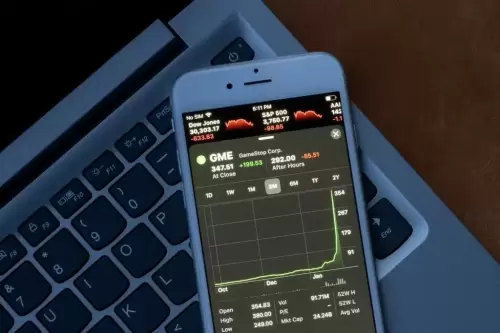 |
|
 |
|
 |
|
 |
|
 |
|
 |
|
 |
|
 |
|
 |
|
 |
|
 |
|
 |
|
 |
|
 |
|
 |
|
In the evolving landscape of cryptocurrency and traditional finance, the boundaries continue to blur as crypto firms are increasingly becoming part of the financial system, according to Legal Futures.
As companies like Circle and BitGo reportedly pursue banking charters and prepare for a wave of incoming stablecoin legislation—including the US’s STABLE and GENIUS Acts and Europe’s MiCA framework—they are navigating a course that could see them operating more like traditional banks.
To discuss to ramifications, Magazine brought together legal experts from across the globe: Charlyn Ho of Rikka in the US, Joshua Chu, co-chair of the Hong Kong Web3 Association, and Yuriy Brisov and CBDC and market researcher Alexandra Zviagintseva, both from Digital & Analogue Partners in Europe.
Magazine: In what way does becoming a regulated bank change how a crypto firm operates?
Chu (HK): Obtaining a banking license would give firms a degree of trust and allow them to offer traditional banking services like deposit-taking and lending. With a bank charter also comes regulatory oversight, including capital control requirements, KYC/AML obligations, and regular audits.
The idea of large crypto players seeking banking licenses isn’t new. Back in 2017, Switzerland invited major crypto institutions to come to the jurisdiction and consider obtaining a banking license. Even then, banks had a role to play. On-ramping and off-ramping currencies are a huge part of the process, whether you like fiat or not. One of the early frustrations among crypto players was seeing money or wealth they couldn’t really touch, because the moment they tried to cash it in, they were red-flagged by banks due to AML policies around unusual or irregular transactions.
Ho (US): When I was at my old law firm, one of the early pro bono projects we worked on involved helping women in Afghanistan who were traditionally barred from having bank accounts. The goal was to use Bitcoin to give them access to funds in a way that couldn’t be taken away by male family members. In contrast, traditional banks in some places might impose restrictions like requiring a male co-signer for account creation or withdrawals. So crypto offered an alternative system that could provide banking-like access without traditional barriers.
I don’t necessarily think that crypto firms getting banking charters means they will abandon all of those original ideals. But the mainstreaming of digital assets does mean some loss of independence from the traditional banking system. If the GENIUS and STABLE Acts (or any future regulations) pass, they will create a regulatory framework for crypto companies that mirrors the framework for traditional finance and banking.
Magazine: Are banks pushing back against stablecoins and is that making stablecoin firms to act more like banks?
Brisov (EU): Initially, banks resisted stablecoins due to competitive concerns. But as it became clear that stablecoins are here to stay, banks have been the first to pivot. In Europe, several banks have already applied to issue their own stablecoins. Similarly, in the US, Bank of America and others have indicated interest.
From early on, one approach was to use crypto as a technology, while still viewing it as part of the global financial system. Players like Circle and Coinbase followed this path, adhering to regulations and rules from the outset.
Kraken was the first crypto exchange to apply for and receive a bank charter in Wyoming. Wyoming is well known among crypto enthusiasts, and in 2020, it created a new entity called a Special Purpose Depository Institution (SPDI). Kraken became the first SPDI in Wyoming. They stated on their website that they received a bank charter. But it wasn’t a federal bank charter or even a traditional state bank charter. It was a special-purpose solution allowing crypto companies to receive deposits, custody cryptocurrency, and facilitate crypto exchanges.
So I wouldn’t say crypto is simply being pushed into the global financial system, but it’s more that certain players chose that path from early on.
For example, Circle has consistently been pro-regulation. They began publishing attestation reports even before frameworks like MiCA in Europe. It was already acting like a bank or bank-like institution.
Magazine: What are key procedural hurdles both the STABLE and GENIUS Acts would have to overcome to become law?
Ho: GENIUS and STABLE are parallel legislative proposals, and neither is law yet. From what I understand, the STABLE Act would create more of a federal regulatory regime, giving stronger control to the federal government. The GENIUS Act leans more toward a state-focused regulatory framework. Both acts are designed to create more clarity over crypto.
The process in the US is that you generally have a sponsor. Generally speaking, a bill has to pass both houses: the House of Representatives and the Senate. If it does, it then goes to the president for either signature or veto.
Magazine: How likely is either bill to advance beyond committee?
Ho
免責聲明:info@kdj.com
所提供的資訊並非交易建議。 kDJ.com對任何基於本文提供的資訊進行的投資不承擔任何責任。加密貨幣波動性較大,建議您充分研究後謹慎投資!
如果您認為本網站使用的內容侵犯了您的版權,請立即聯絡我們(info@kdj.com),我們將及時刪除。
-

- 5個在2025年下半年具有巨大上升潛力的加密貨幣
- 2025-06-14 03:50:12
- 這是一個跡象表明,機構正在超越通常的嫌疑人,例如比特幣和以太坊,到其他具有更高上升空間的山寨幣。
-

-

- 比特幣供應的幾乎三分之一由集中式國債持有
- 2025-06-14 03:45:12
- 包括政府,交易所交易的資金和上市公司在內的集中式國債,現在控制了比特幣供應量的30.9%(BTC)
-

- 在視頻遊戲零售商宣布$ 1.75B Notes產品之後
- 2025-06-14 03:45:12
- 在視頻遊戲零售商宣布計劃為投資目的籌集超過十億美元的計劃後,以GME GME命名的加密貨幣週三炸毀了三位數的收益。
-

- 比特幣(BTC)一直處於明確定義的看漲結構中
- 2025-06-14 03:40:12
- 即使在過去幾周中有很多價格行動,短期持有人似乎表現出了很多克制。
-

-

- 比特幣液體藏有代幣市場正在加快步伐
- 2025-06-14 03:35:12
- 比特幣液體含有代幣的扇區正在提高速度。目前的總價值鎖定(TVL)僅為40億美元,這一數字很快就可能達到了現在難以捉摸的里程碑。
-

-






























































